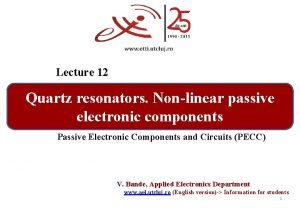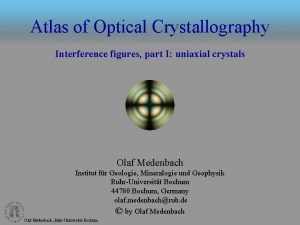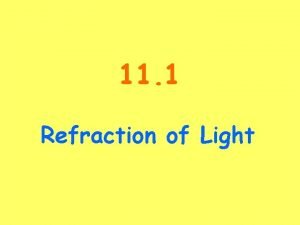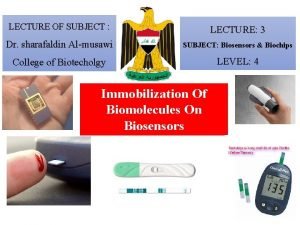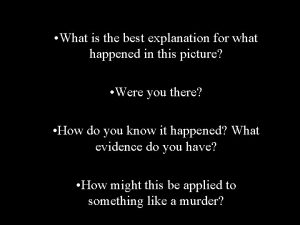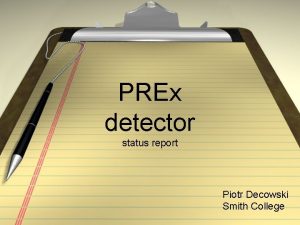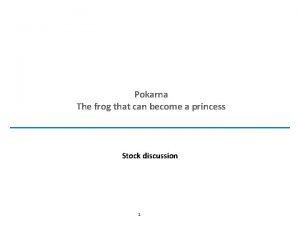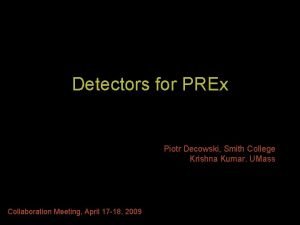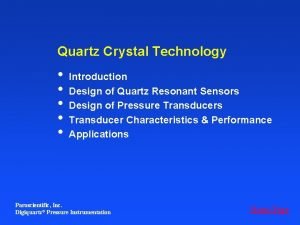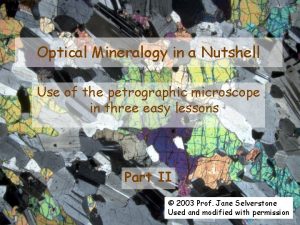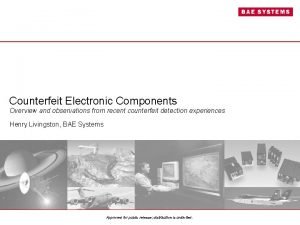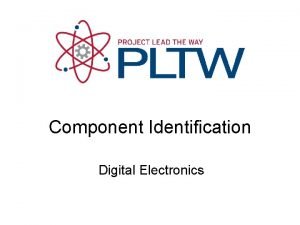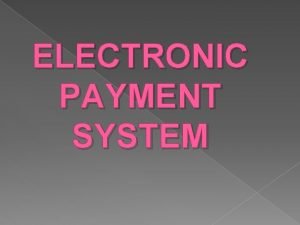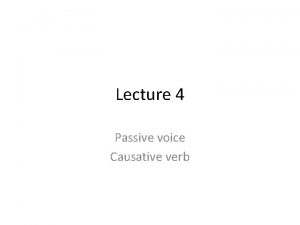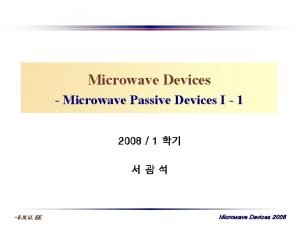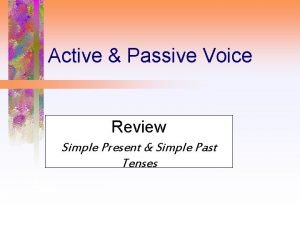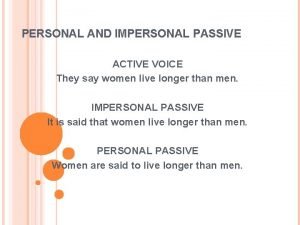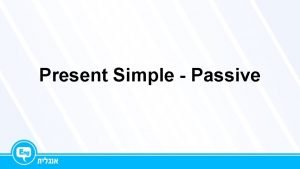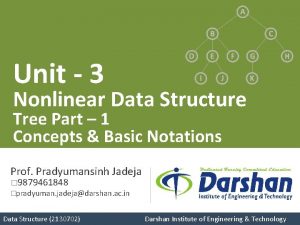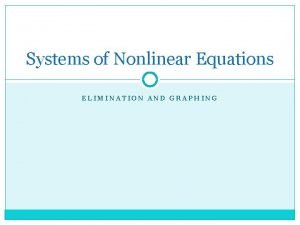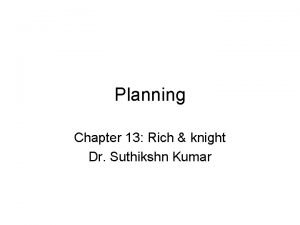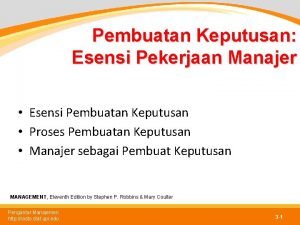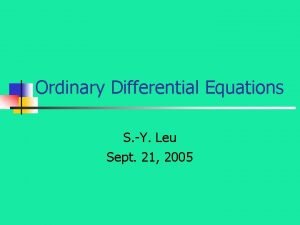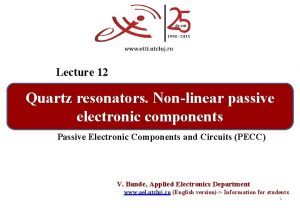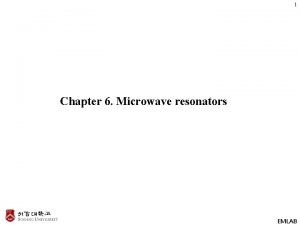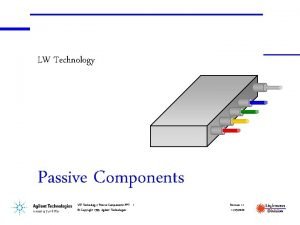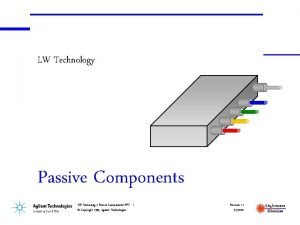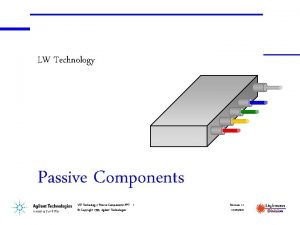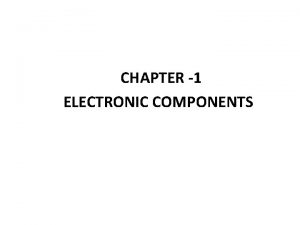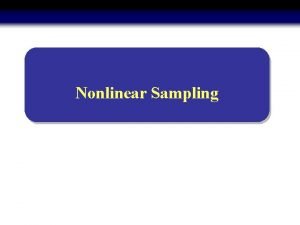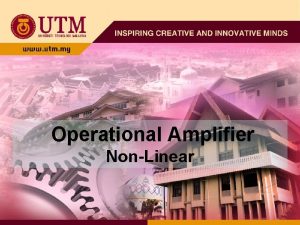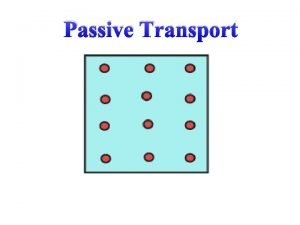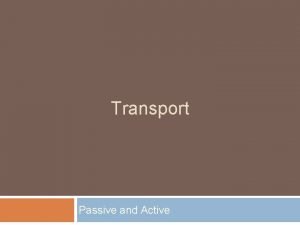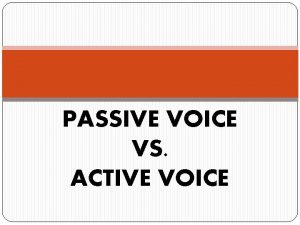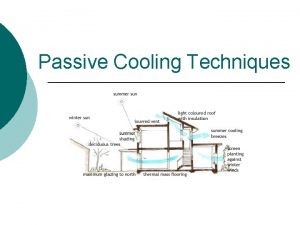Lecture 12 Quartz resonators Nonlinear passive electronic components




































- Slides: 36

Lecture 12 Quartz resonators. Non-linear passive electronic components Passive Electronic Components and Circuits (PECC) V. Bande, Applied Electronics Department www. ael. utcluj. ro (English version)-> Information for students 1

Quartz resonators. Non-linear passive electronic components Quartz resonators Structure Short history Piezoelectric effect Equivalent circuit Quartz resonators parameters Quartz oscillators Non-linear passive electronic components Non-linear resistors – thermistors Nonlinearity phenomena

Quartz resonators q Structure Casing Quartz crystal Socket Silver electrodes (on both sides) Silver contacts Dry inert gas

Quartz resonators. Non-linear passive electronic components Quartz resonators Structure Short history Piezoelectric effect Equivalent circuit Quartz resonators parameters Quartz oscillators Non-linear passive electronic components Non-linear resistors – thermistors Nonlinearity phenomena

Quartz resonators q Short history • Coulomb is the first that scratches the surface in respect with the piezoelectric effect. • Currie brothers are the first scientists that reveal the phenomenon - in 1880. • During first World War, quartzes are being for submarines detection – SONAR sensors. • 1920 – Walter Cady – discovers how to control frequency with the help of a quartz. • 1926 – the first radio station (NY) is broadcasting on a quartz controlled frequency. • During World War II, the US Army modifies all its communication equipment in order to generate quartz controlled frequencies.

Quartz resonators. Non-linear passive electronic components Quartz resonators Structure Short history Piezoelectric effect Equivalent circuit Quartz resonators parameters Quartz oscillators Non-linear passive electronic components Non-linear resistors – thermistors Nonlinearity phenomena

Quartz resonators q Piezoelectric effect • Under the effect of a variable electrical field, the quartz crystal is mechanically vibrating on the same frequency as the electrical field. • If the oscillating frequency has a certain value, the mechanical vibration maintain as well the electrical field. • The frequency at which this phenomenon occurs is called piezoelectric resonance and is strongly dependent by the quartz crystal’s dimensions. • The piezoelectric effect can be used to generate very stable electrical frequencies (quartz controlled oscillators), force measurement (piezoelectric sensors) by acting on the quartz dimensions and modifying its resonance frequency.

Quartz resonators. Non-linear passive electronic components Quartz resonators Structure Short history Piezoelectric effect Equivalent circuit Quartz resonators parameters Quartz oscillators Non-linear passive electronic components Non-linear resistors – thermistors Nonlinearity phenomena

Equivalent circuit q Mechanical – Electrical Analogy Cm Lm Rs Mechanical energy C 0 Electrical energy Pressure and displacement Voltage and current (Lm, Cm) Rs – ESR – Equivalent Series Resistance – models the quartz energy losses C 0 – Shunt Capacitance – the electrodes parasitic capacitance Cm, Lm– the LC circuit that models the movement (displacement)

Equivalent circuit q The equivalent electrical impedance • The equivalent electrical circuit is basically a series RLC circuit connected in parallel with a C 0 capacitance:

Equivalent circuit q The variation of the impedance module • In the adjacent picture, the reactance (imaginary part) variation is presented. • There are two frequencies at which the reactance becomes zero: Fs and Fa. Thus, in this situation, the quartz impedance has only real part.

Equivalent circuit q The electrical meaning of the resonance frequencies • At this two resonance frequencies, the equivalent impedance has a purely resistive behavior the phase-shift between voltage and current is zero. • The series resonance frequency – Fs – is the series LC circuit resonance frequency. At this value, the impedance has minimum value. • The parallel resonance frequency – Fa – is the frequency at which the real part can be neglected. At this value, the impedance has maximum value.

Equivalent circuit q Fs and Fa determination • If we impose the condition that the imaginary part to be zero (purely resistive impedance: • In the parenthesis, the term that contains the Rs can be neglected – very low value, almost zero:

Equivalent circuit q Fs and Fa determination • The solutions are:

Equivalent circuit q The impedance value at both resonance frequencies:

Equivalent circuit q Conclusions: • The series resonance frequency is dependent by the L 1 and C 1 parameters, thus is dependent by the quartz geometrical parameters. This frequency can be adjusted only through mechanical actions! • The parallel resonance frequency can be adjusted in a small domain by connecting a Cp capacitance in parallel with the quartz crystal. This capacitance will be connected in parallel with the C 0 – electrodes capacitance, resulting an equivalent capacitance: Cech = Co + Cp. The boundaries between which the adjustment can be made are very close, because growing the Cech, you can reach the series resonance frequency value.

Quartz resonators. Non-linear passive electronic components Quartz resonators Structure Short history Piezoelectric effect Equivalent circuit Quartz resonators parameters Quartz oscillators Non-linear passive electronic components Non-linear resistors – thermistors Nonlinearity phenomena

Quartz resonators parameters • The nominal frequency – is the resonator’s assigned frequency during fabrication and its being printed on the resonator’s casing. • The load resonance frequency – is the oscillating frequency for the case in which a certain specified capacitance is connected in parallel. • The adjustment tolerance – is the maximum possible deviation of the oscillating frequency in respect with the nominal frequency. • The temperature domain tolerance – is the maximum possible deviation of the oscillating frequency when the temperature varies between minimum and maximum admitted values. • The resonance equivalent series resistance – is the resistance measured at the series resonance frequency (between 25 and 100 ohms for the most common crystals). • The quality factor – values between 104 and 106:

Quartz resonators. Non-linear passive electronic components Quartz resonators Structure Short history Piezoelectric effect Equivalent circuit Quartz resonators parameters Quartz oscillators Non-linear passive electronic components Non-linear resistors – thermistors Nonlinearity phenomena

Quartz oscillators • Inside electronic circuits that contain quartzes, the load connected at its terminals can be viewed as a Rl impedance. • Depending on the relationship between Rl and Rs, there can be three different regimes: Ø Damped regime – oscillation attenuation Ø Amplified regime – oscillation amplification Ø Auto-oscillating regime – oscillation sustaining

Quartz oscillators q Damped regime

Quartz oscillators q Amplified regime

Quartz oscillators q Auto-oscillating regime

Quartz resonators. Non-linear passive electronic components Quartz resonators Structure Short history Piezoelectric effect Equivalent circuit Quartz resonators parameters Quartz oscillators Non-linear passive electronic components Non-linear resistors – thermistors Nonlinearity phenomena

Thermistors • The thermistors are variable resistors that have a very fast resistance variation when the temperature is changing. • The temperature variation coefficient can be negative – NTC (negative temperature coefficient – components fabricated since 1930) or positive – PTC (positive temperature coefficient – components fabricated since 1950). • Both thermistor types are non-linear, the resistance variation law with the temperature being:

Thermistors q NTC’s and PTC’s thermistors • The temperature variation coefficient is defined as follows: • If the material constant “B” is positive, then we will have an NTC thermistor, if “B” is positive we will have a PTC thermistor.

Thermistors q Non-linear circuits analysis

Thermistors q Using thermistors as transducers • The thermistors dissipated power must be lower enough in order that the supplementary heating produced inside thermistor body to be negligible. • This condition can be assured by connecting high value resistances in series with thermistor which will lead to a smaller current that passes through thermistor.

Thermistors q Example: A voltage divider with a NTC thermistor

Quartz resonators. Non-linear passive electronic components Quartz resonators Structure Short history Piezoelectric effect Equivalent circuit Quartz resonators parameters Quartz oscillators Non-linear passive electronic components Non-linear resistors – thermistors Nonlinearity phenomena

Nonlinearity phenomena • Almost al physical quantities variation laws are non-linear! • As a consequence, the electronic components characteristics which are based on those laws are also non-linear. • The non-linear systems analysis using linear methods, specific to linear systems introduces errors. Those methods can be applied only on restrictive small intervals of quantities variations. In this way, the errors are being kept under the maximum allowed errors.

Nonlinearity phenomena q Linearization – Piece by piece linearization Chord (ro. Coarda) method Tangent method Secant method

Nonlinearity phenomena q Linearization – Piece by piece linearization • You can either impose the number of the intervals on which the linearization is being made and different errors will occur from an interval to another. • Or you can impose the maximum acceptable error during the linearization procedure, thus resulting the number on the interval on which the linearization can be made and also the interval maximum length. • For both condition, at the end of each interval, respectively at the beginning of the following interval, the continuity condition must be assured.

Nonlinearity phenomena q Linearization – nonlinearities elimination procedure

Nonlinearity phenomena q Linearization – nonlinearities elimination procedure

Nonlinearity phenomena q Linearization – an example: • Please determine the voltagecurrent characteristic for the situations in which the components with the two characteristics revealed in the picture are connected in series, respectively in parallel.
 Nonlinear electronic components
Nonlinear electronic components Nonlinear regression lecture notes
Nonlinear regression lecture notes Quartz solutions inc
Quartz solutions inc Quartz my chart
Quartz my chart Interference figure of quartz
Interference figure of quartz Index of refraction of jello
Index of refraction of jello Quartz
Quartz Quartz microbalance
Quartz microbalance Quartz mountain lookout
Quartz mountain lookout Shocked quartz
Shocked quartz Quartz smith college
Quartz smith college Pokarna valuepickr
Pokarna valuepickr Quartz smith college
Quartz smith college Quartz crystal technology
Quartz crystal technology Uniaxial and biaxial
Uniaxial and biaxial 01:640:244 lecture notes - lecture 15: plat, idah, farad
01:640:244 lecture notes - lecture 15: plat, idah, farad Is the electronic exchange of money or scrip
Is the electronic exchange of money or scrip Electronic field production
Electronic field production Counterfeit electronic components an overview
Counterfeit electronic components an overview Electronic component
Electronic component Contains the central electronic components of the computer
Contains the central electronic components of the computer Eps system meaning
Eps system meaning Active causative verbs
Active causative verbs Active and passive components in microwave
Active and passive components in microwave Present perfect pasive
Present perfect pasive Passive and active present simple
Passive and active present simple Impersonal passive voice exercises with answers
Impersonal passive voice exercises with answers Present progressive passive or past progressive passive
Present progressive passive or past progressive passive Present simple passive de eat
Present simple passive de eat Linear and nonlinear data structure
Linear and nonlinear data structure Linear editing vs non linear editing
Linear editing vs non linear editing Linear and nonlinear data structure
Linear and nonlinear data structure Graphing nonlinear equations
Graphing nonlinear equations Non linear text
Non linear text Nonlinear planning using constraint posting
Nonlinear planning using constraint posting Contoh gaya berpikir linear dan nonlinear
Contoh gaya berpikir linear dan nonlinear Nonlinear ode
Nonlinear ode
